Cabins, barns, attics, garages or closets all work for storing your outdoor gear.
Taking care of and storing our outdoor gear is an art we’re still trying to master. After all, outdoor gear is an investment, and for the sake of the environment (and your bank account), you want it to go the distance to avoid repeatedly replacing items. Here’s a break-down of a few of the essential things we consider before packing gear away for the season.
ORGANIZE YOUR SPACE
The first thing that we’d suggest, is to find someplace to organize your gear. You want somewhere dry and out of the way, with bonus points for being able to regulate the temperature. An attic or garage with a free wall for hanging gear and a few shelves is ideal, but even a small closet will do for a simple setup. Depending on the level of your gear addiction, be warned that gear storage can get out of hand quickly. Before you know it, you could have an entire room in your house dedicated to gear, with your bouldering crash pads doubling as a couch for out-of-town visitors. We’ve seen it happen, and have to admit that we fully support it.
After you’ve got the space identified, lay out all your gear and give everything the yearly “do I really need this” test. We’re all guilty of owning gear that never gets used, so this process is critical.
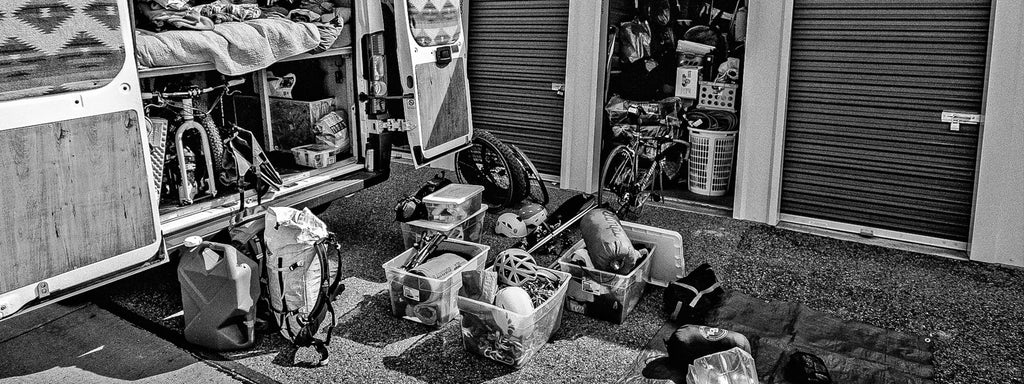
There are lots of different DIY ideas around, so we’d recommend doing some research with a quick Google search (but we’ve also included a few relevant links below for some inspiration).
If you’ve got wall space to spare, a combination of pegboard and/or shelving is a great way to go. Even without a wall, picking up a few storage totes from your local hardware store is a must-do. They usually come in a variety of shapes and sizes, and can swallow up clothing, winter gear, helmets, backpacks, etc… And stack neatly pretty much anywhere. Organize your gear by category and remember to label your storage totes. This small investment is 100% worth it.

BACKPACKS
After any number of days out on the trail your pack will inevitably start smelling “natural”, for lack of a better term. This is acceptable on the trail, but not what anyone wants at home. And while we admit that our white packs won’t ever be brand-new-white again (wear your Trail Patina with pride), giving the outer fabric a rinse after each trip helps keep it looking fresh.
| Care + Storage Tips |
|
|
|
|
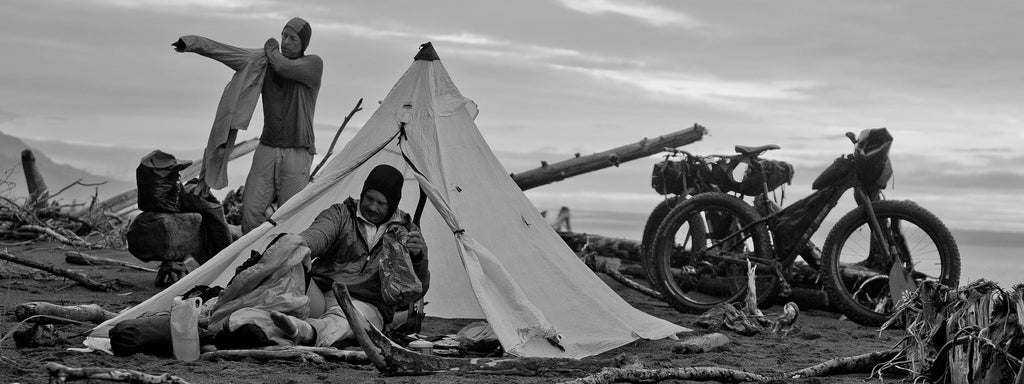
SHELTERS, TARPS + TENTS
Setting up your shelter out on the trail only to realize that it’s moldy will ignite a rage from deep within. Trust us…we’ve all been there. And while cleaning it after every time out is a great thought, it is rarely the reality. And don’t get us started on forgetting to count your stakes until arriving at camp. That’ll get you every time. So get out in front of the problem: Double-check your stakes and make sure everything is packed away together at the end of the season (or better yet, before and after every trip).
| Care + Storage Tips |
|
|
|
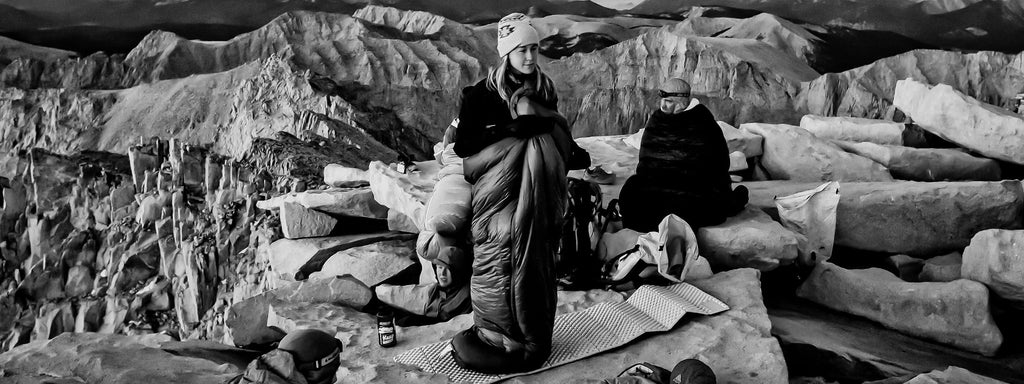
SLEEPING BAGS + PADS
Down and synthetic sleeping bags will have varying care instructions depending on your specific model, so be sure to check with your sleeping bag manufacturer to see what they recommend.
The crew over at Feathered Friends are, in our opinion, masters when it comes to caring for (and creating awesome) sleeping bags. Check out their Washing and Care Instructions for a head start into the process.
| Care + Storage Tips |
|
|
|
|
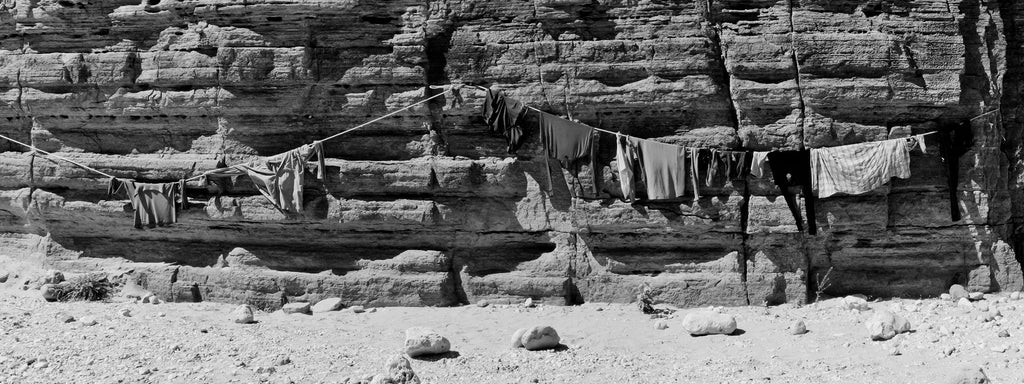
OUTERWEAR
It should go without saying, but it will benefit you greatly to send your seasonal outerwear and activity-specific clothing through a wash cycle before packing it away for the season. Make sure to empty pockets and follow specific fabric care instructions as well. Although stuffing your jackets into their pockets is great in practice out on the trail, it’s not a good long-term storage idea. Let the fabric breathe and hang or fold it for storage.

COOKING SYSTEM
Remember what your mother told you: Wash your dishes. Especially before putting them away for the season.
And make sure you toss any empty fuel canisters that might be laying around. If you’ve ever accidentally brought an old canister on a trip, you’ll understand why this is a good idea.
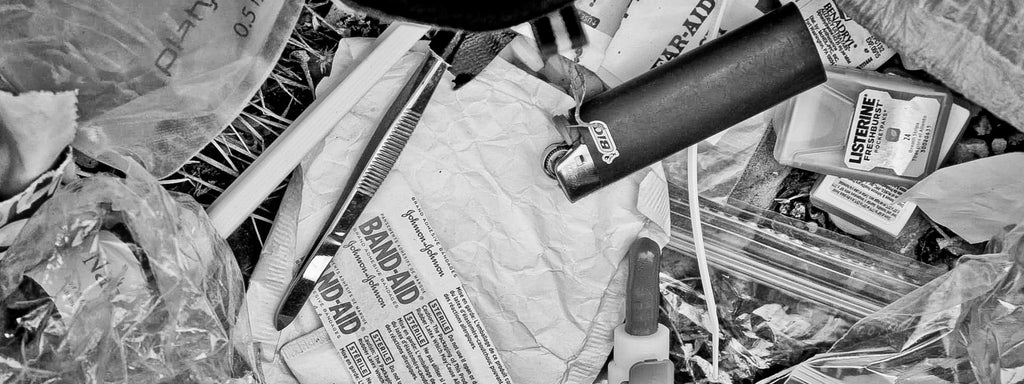
FIRST AID KIT
Re-stock your kit with any items that were used throughout the year. Floss, tape, antibiotics, lighter, and aspirin are a few items that we like to swap out regularly. Adding a Dyneema® repair kit might come in handy as well. The tape and patches included are great for lots of different field repairs. And if you don’t have a standardized first aid kit yet, check out our blog post: How to Make Your Own Ultralight First Aid Kit, Redux.
WE ARE ONLY SCRATCHING THE SURFACE HERE, AND WOULD LOVE TO HEAR YOUR THOUGHTS ON HOW TO IMPROVE THIS LIST.
We understand that a lot of this information is specific to to our ultralight products, but the general concepts transfer well to any outdoor gear you may have laying around. And please feel free to share any of your personal insights and/or photos of your storage area. We’re in need of installing something at our offices here in Maine, and would love some inspiration.
ADDITIONAL INSPIRATION:
The Ultimate Gear Storage Facility // OutsideOnline.com
Upgrade Your Gear Closet // Backpacker.com
A Look Inside the Country’s Raddest Gear Sheds // OutsideOnline.com
Ideas for Storing Outdoor Gear in a Tiny Apartment // Semi-Rad.com























